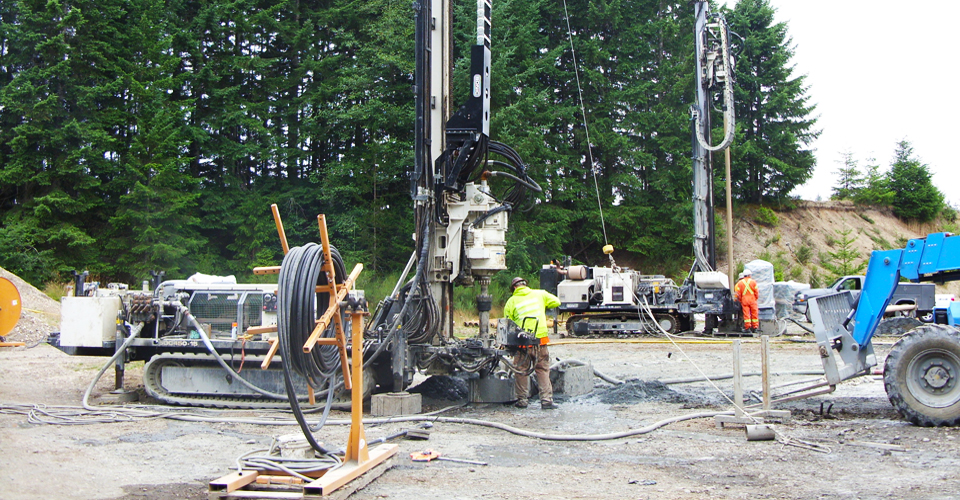What is Mineral Exploration ?
Introduction
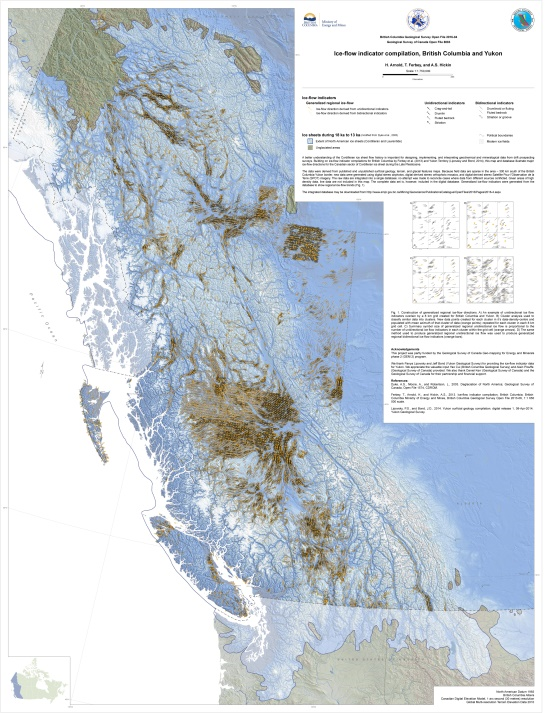
Glacial Ice Flow Western Canada
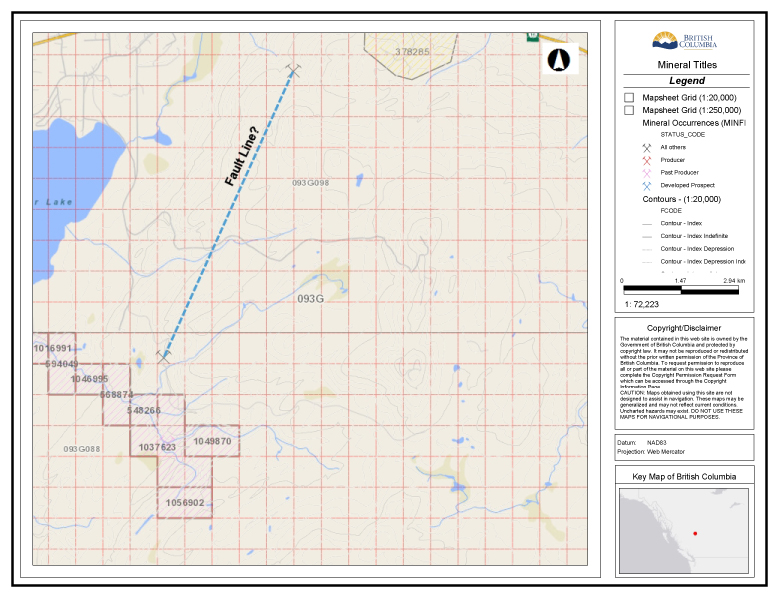
Claims Map With Topography Layer
Exploration usually starts by looking for areas of possible mineralization and by taking samples in those areas of interest. Exploration activities are conducted in order to discover base metals and any precious metals or in some cases crystals (diamonds, rubies, etc.). These areas of interest would be staked (claimed) by an exploration company or prospector. This is usually done by an interactive map or by agreements with other third party claimants in the area. Before any work is started on the ground, it must be proven. In other words the samples collected would go to assay to determine if the mineral quantity is worth the investment to proceed with further exploration. If it is then it would be essential to submit applications for permits to the government agencies involved in order to comply with regulations. Moreover, according to the location of the claimed area, whether it would be on public or private land, permits and agreements are required to ensure compliance with regulations surrounding the effective communities and or land owners.
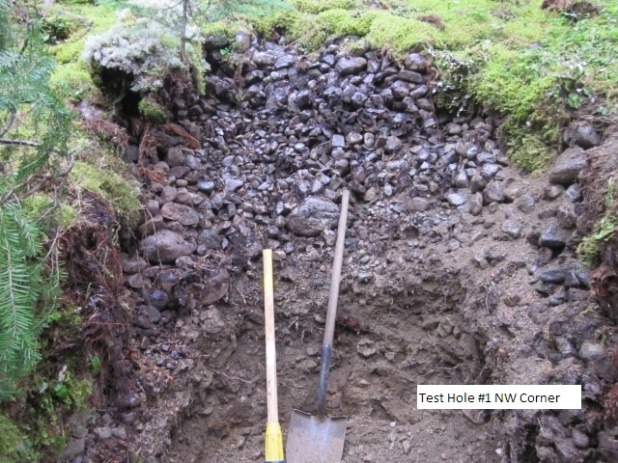
Sampling
In retrospect Mineral exploration includes prospecting, detailed mapping, the digging of trenches, stripping, grooving, and the different geophysical surveys.
These activities will determine the viability of a mine and its associated startup and operational costs. The sampling activities will determine the minerals in the rock and its predicted quantity per ton. The initial activity is prospecting, the other activities may be carried out in a different order. Survey teams may be sent into the field to collect the required information to be able to conduct surveys in order to reduce the area for further exploration. Samples will be taken directly from either the till or rock, or in some cases, vegetation in order to determine or find the presence of any metals of value.
The Discovery Of A Mineralized Area

Preparing Material For Analysis
Once a discovered ore body is validated, The remainder of those activities listed will be initiated. Advanced exploration work will commence. Detailed geophysical surveys will be conducted for digging of trenches, the clearing of vegetation, and road creation for access. Sampling activities will be more systematic. This could incorporate trenching and or drilling. If the samples are positive then the area would be designated as a mineralized zone.

Trenching For Extended Mineral Quantity
Advanced exploration

Strip Mine To Bed Rock

Cleaning With Groove Saw
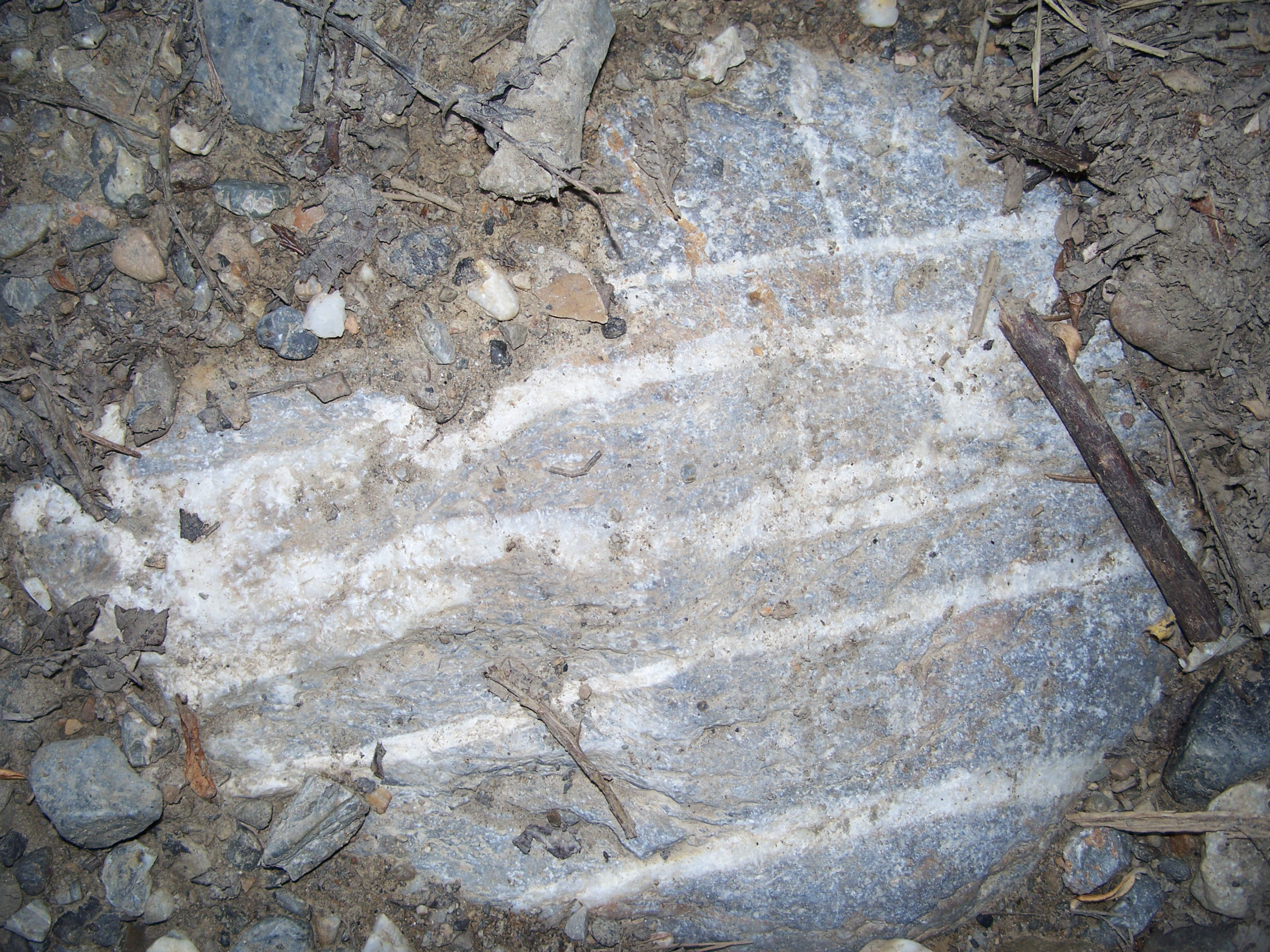
Nice Find - White Line At Top Is A Scrape Mark
This is when a more advance exploration activity is implemented. This can be considered as exploration mining. This is when the area is thoroughly tested. It is at this stage when the area will be strip mined to bedrock. The material collected will be processed and analyzed. The surface material will be totally removed, right down to bedrock. This will expose any and all of the valuable mineral veins with in the rock structure. Drilling and or trenching will determine the viability of the project. Mapping and physical surveys determined the actual mining location; the teams will now adequately clean the rock bed in order to take systematic samples of the exposed ore beds using a grooving saw as well as other methods such as core drilling to perform a geological detailed mapping of the ore veins. Geophysical mapping will be conducted throughout the life of the mine. Continued sampling will determine the longevity of the project.
Planning And Resource Exploitation
Finally, after all that work, in order to continue with a full scale mining operation further permits, leases and licenses may be required and that the project will need to be submitted for a further environmental assessment with government, public, and first nations authorities. Small quantities of mineral deposits discovered have become what has been termed as exploited mines in the world. The prefeasibility and feasibility studies on the future exploitation can take up to 10-15 years for a large scale mine to develop. Rarely the projects reach this course of development.
